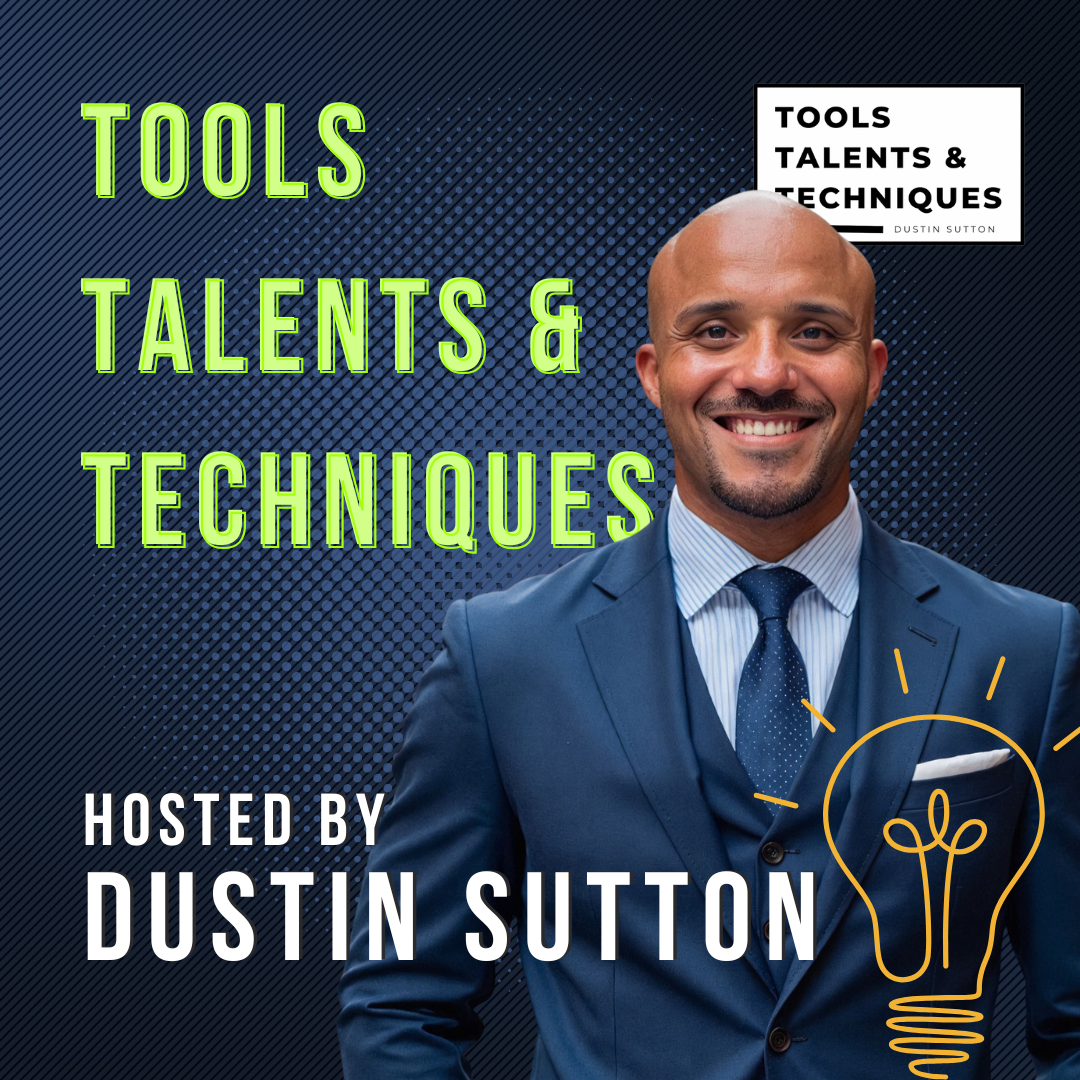Leadership Experiments: Rapid Tests to Unlock Stuck Teams

In today's fast-paced and ever-evolving business landscape, leadership is no longer about rigid control and top-down directives. Instead, it's about fostering agility, innovation, and collaboration within teams. One powerful tool for achieving this is the concept of leadership experimentation – using rapid tests to identify bottlenecks, improve communication, and unlock the full potential of your team. In this blog post, we'll explore how to embrace an "everything is an experiment" mindset, design effective experiments, create a culture of experimentation, and learn from inevitable failures. This expands on the insightful conversation with executive coach Arielle Lechner from NewPo in our recent podcast episode, Navigating Change: Arielle Lechner on Coaching, Startups & Personal Growth (Ep. 87). Arielle emphasizes that discomfort is the compass and experimentation is the engine. Let's dive into how you can use experimentation to drive team performance.
Introduction: The Power of Experimentation in Leadership
Leadership experimentation involves treating every action, decision, and initiative as a potential experiment. This approach enables leaders to test hypotheses, gather data, and make informed decisions about how to improve team performance, communication, and overall effectiveness. Experimentation isn't about blindly trying things and hoping for the best; it's about a structured approach to learning and improvement. It's about fostering a culture where teams feel empowered to try new things, learn from both successes and failures, and continuously adapt to changing circumstances.
Why is experimentation so powerful? Because it provides real-world data that trumps assumptions and gut feelings. It enables leaders to move beyond simply guessing what might work and instead, systematically discover what actually works. This is crucial in today's complex environment where what worked yesterday may not work today.
The 'Everything is an Experiment' Mindset
Adopting the mindset that "everything is an experiment" is a fundamental shift in perspective. It means approaching every aspect of your work, from daily tasks to strategic initiatives, with a sense of curiosity and a willingness to test assumptions. This mindset encourages you to:
- Question the status quo: Don't accept things simply because that's how they've always been done.
- Formulate hypotheses: Before taking action, ask yourself, "What do I expect to happen?"
- Collect data: Track the results of your actions and gather data to see if your hypotheses were correct.
- Analyze results: Reflect on the data and draw conclusions about what worked and what didn't.
- Adapt and iterate: Use your findings to adjust your approach and try new experiments.
This mindset extends beyond individual tasks and projects. It also applies to team dynamics, communication patterns, and organizational processes. By viewing everything as an experiment, you create a culture of continuous learning and improvement.
Why Teams Get Stuck: Identifying Bottlenecks
Before you can start experimenting, it's important to understand why teams get stuck in the first place. Identifying the bottlenecks that are hindering team performance is the first step toward designing effective experiments. Common bottlenecks include:
- Poor communication: Lack of clear communication, misunderstandings, and information silos can all lead to inefficiencies and frustration.
- Lack of clarity: When team members are unclear about their roles, responsibilities, or goals, it can lead to confusion and duplicated effort.
- Inefficient processes: Cumbersome or outdated processes can slow down workflows and create unnecessary delays.
- Lack of trust: If team members don't trust each other, they may be reluctant to share ideas, take risks, or collaborate effectively.
- Fear of failure: A culture that punishes mistakes can stifle creativity and prevent team members from trying new things.
To identify bottlenecks, you can use a variety of techniques, such as:
- Team surveys: Ask team members to identify the biggest challenges they face and suggest areas for improvement.
- Observation: Observe team interactions and workflows to identify inefficiencies or communication breakdowns.
- Data analysis: Track key metrics, such as project completion times or customer satisfaction scores, to identify areas where performance is lagging.
- One-on-one conversations: Have individual conversations with team members to understand their perspectives and concerns.
Once you've identified the key bottlenecks, you can start designing experiments to address them.
Designing Rapid Tests for Team Improvement
The key to effective leadership experimentation is to design rapid tests that provide quick feedback and minimize risk. A rapid test is a small-scale experiment that can be implemented quickly and easily, allowing you to gather data and learn from the results without investing significant time or resources.
When designing rapid tests, consider the following:
- Define a clear hypothesis: What problem are you trying to solve, and what do you expect to happen if you implement your experiment?
- Identify key metrics: How will you measure the success of your experiment? What data will you collect?
- Keep it simple: Start with small, manageable experiments that are easy to implement and track.
- Set a time limit: Determine how long you will run the experiment before analyzing the results.
- Involve the team: Get team members involved in the design and implementation of experiments to foster buy-in and ownership.
For example, if you suspect that poor communication is a bottleneck, you might try a rapid test where you implement a daily stand-up meeting to improve information sharing. Your hypothesis might be that daily stand-up meetings will improve communication and reduce misunderstandings. Your key metrics might include the number of emails related to project updates and the time it takes to resolve issues.
Fostering a Culture of Experimentation
Creating a culture of experimentation requires more than just implementing rapid tests. It requires a fundamental shift in mindset and a commitment to creating an environment where team members feel safe to experiment, take risks, and learn from failures.
Here are some key steps to fostering a culture of experimentation:
- Empower your team: Give team members the autonomy to design and implement their own experiments.
- Encourage risk-taking: Reward experimentation, even when it leads to failure.
- Celebrate learning: Focus on the lessons learned from experiments, rather than just the outcomes.
- Share your own failures: Be open about your own mistakes and what you've learned from them.
- Provide resources: Give team members the tools and resources they need to experiment effectively.
- Lead by example: Show your team that you are also willing to experiment and take risks.
By creating a culture of experimentation, you can unlock the full potential of your team and drive continuous improvement.
Learning from Failure: Turning Setbacks into Growth
Failure is an inevitable part of experimentation. Not every experiment will be successful, and that's okay. The key is to learn from failures and use them as opportunities for growth. When an experiment fails, it's important to:
- Analyze the results: Understand why the experiment didn't work. What assumptions were incorrect? What factors did you not consider?
- Identify lessons learned: What did you learn from the experiment? What will you do differently next time?
- Share your findings: Share your results with the team, both successes and failures.
- Celebrate the learning: Acknowledge the effort and dedication that went into the experiment, even if it didn't produce the desired results.
By framing failure as a learning opportunity, you can create a culture where team members are not afraid to take risks and experiment with new ideas.
Practical Tips for Implementing Leadership Experiments
Here are some practical tips for implementing leadership experiments in your organization:
- Start small: Begin with small, low-risk experiments that are easy to implement and track.
- Focus on specific problems: Choose experiments that address specific bottlenecks or challenges.
- Involve the team: Get team members involved in the design and implementation of experiments to foster buy-in and ownership.
- Track your results: Collect data and track key metrics to measure the success of your experiments.
- Communicate your findings: Share your results with the team, both successes and failures.
- Be patient: Experimentation takes time and effort. Don't get discouraged if your first few experiments don't produce the desired results.
- Iterate and adapt: Use your findings to adjust your approach and try new experiments.
Remember, the goal of leadership experimentation is not to find the perfect solution overnight. It's about creating a culture of continuous learning and improvement.
Arielle Lechner's Insights on Leadership Experimentation
In our podcast episode, Arielle Lechner shared valuable insights on leadership experimentation. She emphasized the importance of:
- Creating a safe space for experimentation: Team members need to feel comfortable taking risks and trying new things without fear of punishment.
- Focusing on the learning process: The goal is not just to achieve a specific outcome, but also to learn and grow as a team.
- Embracing discomfort: Experimentation often involves stepping outside of your comfort zone and challenging the status quo.
- "Everything is an experiment": this mindset allows you to embrace learning on a day-to-day basis.
Arielle also highlighted the importance of setting clear expectations and communicating effectively throughout the experimentation process. By following these guidelines, you can create a culture of experimentation that drives innovation and improves team performance.
Examples of Successful Leadership Experiments
Here are a few examples of successful leadership experiments:
- Implementing daily stand-up meetings: This can improve communication and coordination within the team.
- Rotating team roles: This can help team members develop new skills and gain a better understanding of each other's work.
- Experimenting with different communication channels: This can help you find the most effective way to communicate with your team.
- Implementing a "no meeting" day: This can give team members more time to focus on their individual tasks.
- Trying a new project management methodology: This can help you improve the efficiency of your workflows.
These are just a few examples, and the specific experiments you try will depend on the unique challenges and opportunities facing your team.
Conclusion: Unlocking Team Potential Through Experimentation
Leadership experimentation is a powerful tool for unlocking the potential within teams. By embracing an "everything is an experiment" mindset, designing rapid tests, fostering a culture of experimentation, and learning from failures, leaders can create an environment where teams feel empowered to try new things, innovate, and continuously improve. This approach is not about finding quick fixes but about building a sustainable system of learning and adaptation.
As Arielle Lechner pointed out in our conversation on Navigating Change: Arielle Lechner on Coaching, Startups & Personal Growth (Ep. 87), experimentation is the engine that drives growth and innovation. By embracing this approach, you can transform your team into a high-performing, agile, and innovative unit that is ready to tackle any challenge. Start experimenting today, and unlock the full potential of your team!






